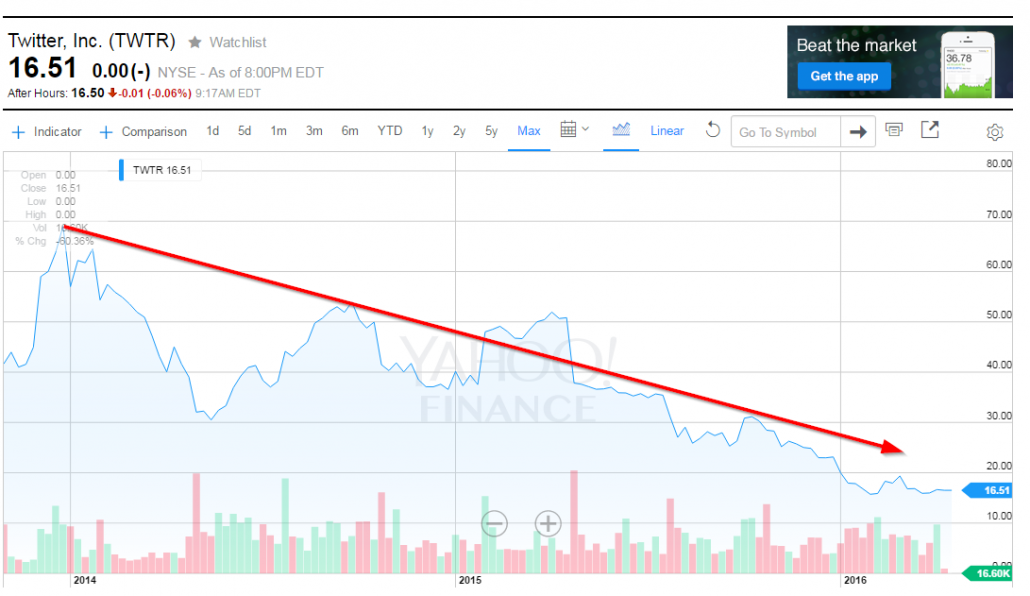Twitter seems to be a favorite dataset for financial researchers. Researchers keep trying to map tweets to profits.
For example, we covered an idea related to this almost 5 years ago: Is trading with twitter only for twits?
We had another post that was released about a year after our original highlight that discusses the death of a hedge fund dedicated to the idea of using tweets for profit: The death of twitter trading.
It seems that trading on tweets is about as profitable as trading twitter stock:
But now we have a new entrant in the “tweets for profit” theme. There are a couple of unique elements to this twitter themed paper:
- Tweets are being used to predict stock market reactions to FOMC meetings.
- Andrew Lo — a well established academic — is an author on the paper.
A quote from the paper says it all:
We find that portfolios using Twitter data can significantly outperform a passive buy-and-hold strategy.
I am skeptical that a 140 character tweet can capture sentiment that can be used to capture profits. And if history is any guide this idea is probably bogus. However, because Andrew Lo is involved, this working paper is at least worth a look.
Here is a link to the paper and the abstract:
The Wisdom of Twitter Crowds: Predicting Stock Market Reactions to FOMC Meetings via Twitter Feeds
With the rise of social media, investors have a new tool to measure sentiment in real time. However, the nature of these sources of data raises serious questions about its quality. Since anyone on social media can participate in a conversation about markets — whether they are informed or not — it is possible that this data may have very little information about future asset prices. In this paper, we show that this is not the case by analyzing a recurring event that has a high impact on asset prices: Federal Open Market Committee (FOMC) meetings. We exploit a new dataset of tweets referencing the Federal Reserve and shows that the content of tweets can be used to predict future returns, even after controlling for common asset pricing factors. To gauge the economic magnitude of these predictions, the authors construct a simple hypothetical trading strategy based on this data. They find that a tweet-based asset-allocation strategy outperforms several benchmarks, including a strategy that buys and holds a market index as well as a comparable dynamic asset allocation strategy that does not use Twitter information.
About the Author: Wesley Gray, PhD
—
Important Disclosures
For informational and educational purposes only and should not be construed as specific investment, accounting, legal, or tax advice. Certain information is deemed to be reliable, but its accuracy and completeness cannot be guaranteed. Third party information may become outdated or otherwise superseded without notice. Neither the Securities and Exchange Commission (SEC) nor any other federal or state agency has approved, determined the accuracy, or confirmed the adequacy of this article.
The views and opinions expressed herein are those of the author and do not necessarily reflect the views of Alpha Architect, its affiliates or its employees. Our full disclosures are available here. Definitions of common statistics used in our analysis are available here (towards the bottom).
Join thousands of other readers and subscribe to our blog.


